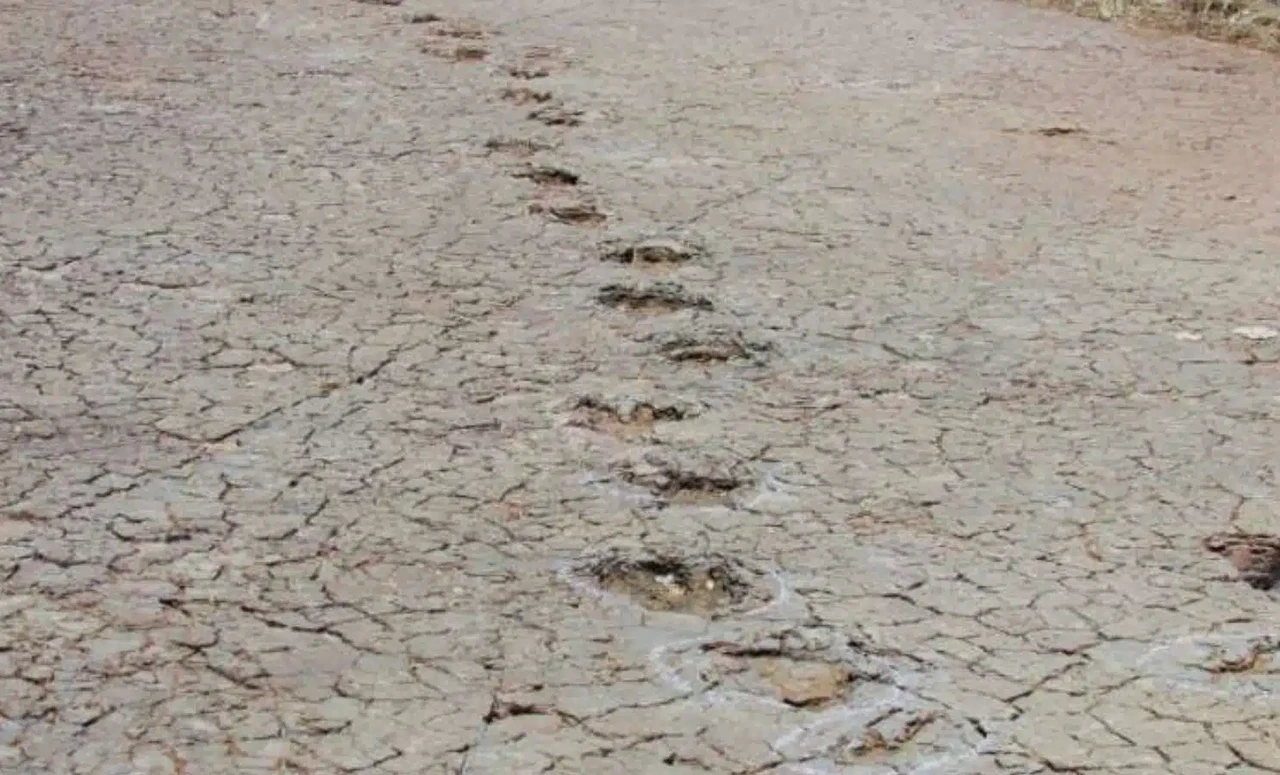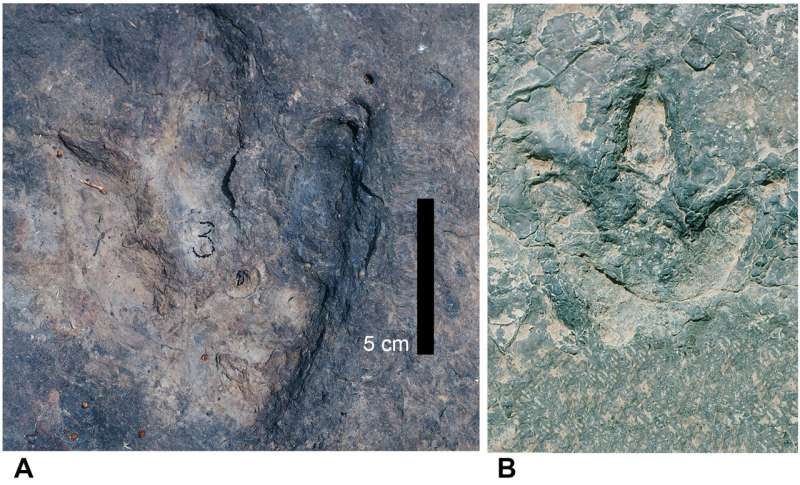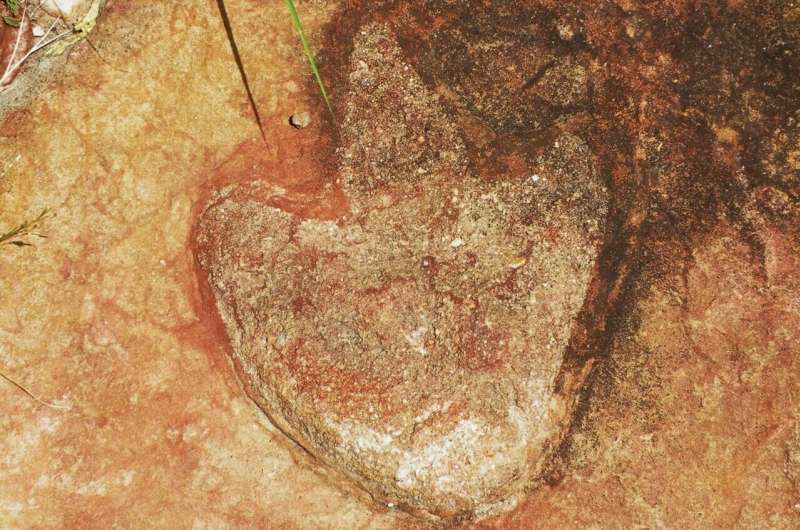Dinosaur footprints on both sides of Atlantic confirm ancient land bridge
 A long ornithopod trackway at Passagem das Pedra, Sousa (Photo by Ismar de Souza Carvalho, SMU)
A long ornithopod trackway at Passagem das Pedra, Sousa (Photo by Ismar de Souza Carvalho, SMU)
Researchers have discovered matching sets of dinosaur footprints in Brazil and Cameroon, shedding light on a time when South America and Africa were connected as part of the supercontinent Gondwana.
Led by Southern Methodist University (SMU) paleontologist Louis L. Jacobs, the international team found more than 260 dinosaur footprints that offer new evidence of the ancient link between these continents.

Where were the dinosaur footprints found?
The dinosaur footprints, located over 6,000 kilometers apart, were unearthed in Brazil’s Borborema region and Cameroon’s Koum Basin. These tracks, dated to approximately 120 million years ago, were made by dinosaurs that once roamed freely across Gondwana before it began to split apart. Jacobs emphasized the significance of this finding, noting that the footprints “were similar in terms of age, geological context, and shape.”
Most of the footprints belong to three-toed theropod dinosaurs, though some might have been left by sauropods or ornithischians. The tracks were preserved in the sediments of ancient rivers and lakes, providing a unique glimpse into the lives of these prehistoric creatures.
The presence of half-graben basins in both locations, geological structures formed during the rifting process, adds further context to the discovery. These basins contain ancient sediments that help researchers understand the environmental conditions in which these dinosaurs lived.

Gondwana’s breakup, formation of South Atlantic Ocean
Gondwana, which began breaking apart around 140 million years ago, eventually split into the continents we know today. As tectonic plates shifted, cracks formed in the Earth’s crust, leading to the rise of magma that created new oceanic crust. Over time, this process widened the South Atlantic Ocean, separating Africa and South America.
One of the last connections between the two continents was a narrow land bridge in northeastern Brazil, closely aligned with what is now the coastline of Cameroon. Jacobs explained, “The two continents were continuous along that narrow stretch, so that animals on either side of that connection could potentially move across it.” This land bridge provided a critical passage for dinosaurs and other land animals before the continents finally drifted apart.

Newly discovered dinosaur footprints reveal earth’s geological, biological history
The discovery of these matching footprints offers valuable insight into Earth’s geological past and the life forms that once inhabited these now-separated lands. By studying these ancient tracks, scientists can reconstruct the environments and behaviors of dinosaurs that lived millions of years ago. Jacobs pointed out how these river valleys, where the footprints were found, served as corridors for life to travel across continents.
The study, which included contributions from experts at Harvard University, Northwestern University, and the Universidade Federal do Rio de Janeiro, was published in honor of the late paleontologist Martin Lockley. Lockley dedicated much of his career to studying dinosaur tracks, and this discovery adds a new chapter to the understanding of how these ancient creatures moved across the globe.



